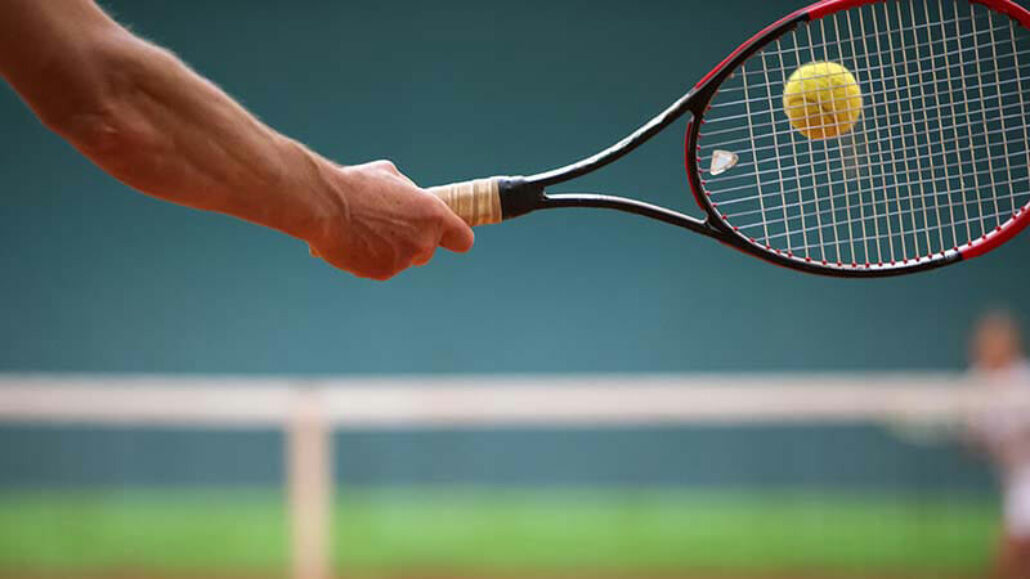If the fingers of your hand begin to curl and you find that you can’t straighten them, you may have Dupuytren’s contracture. Although there is no cure for this condition, there are a number of treatments to slow the progression of the disease. We explain the causes and symptoms of this condition.
We depend on the mobility of our fingers as we move through our day. Nimble digits make it possible to swing a golf club, catch a football, or grip a tennis racket. On a typical day, we take it for granted that we’ll be able to hold a hair dryer, lace our shoes, open doors, drawers, and cabinets, and gather the kitchen utensils we use to whip up breakfast. We expect our hands to respond, and when they don’t, it can be disconcerting.
Dupuytren’s contracture
Dupuytren’s contracture is a condition that can limit hand function by causing one or more fingers to involuntarily curl toward the palm. The little finger and ring finger are most prone to this condition, but all fingers can be affected. The first symptom of Dupuytren’s contracture is the formation of one or more small painful bumps under the skin in the palm. Over time, these bumps thicken and contract. As they toughen, they pull one or more fingers toward the palm. As fingers become more curled over time, they become harder to straighten.
Historical roots
According to historic lore, raiding Vikings brought Dupuytren’s contracture to Northern Europe. Although we can’t vouch for this swashbuckling version of the disease’s origin, there are known instances of the condition noted as early as the 12th and 13th centuries—hundreds of years before it was named in the 19th century. It is most common among patients of Northern European descent. It’s no surprise that we see our share of patients with Dupuytren’s here in Scandinavian-settled Minnesota.
Risk factors
We don’t know what causes this condition, but some of the risk factors have been identified.
- Gender is one risk factor; Dupuytren’s contracture is more common in men than in women.
- Your ancestry may put you at risk. This condition often runs in families, especially if your family is English, Irish, Scottish, French, Dutch, Swedish, Norwegian, or Finnish.
- Research suggests a connection between this condition and drinking alcohol.
- Some medical conditions are associated with Dupuytren’s contracture, such as diabetes and seizures.
- Age is another factor; Dupuytren’s contracture increases in frequency with age.
Treatment options
Over time in most patients, Dupuytren’s contracture slowly causes one or more fingers to curl down toward the palm. The condition is not dangerous, but it can become increasingly inconvenient over time. Currently, there is no cure for this disease, but we do have a number of treatments to improve finger function and slow the progression. If you notice symptoms, consult a hand specialist to discuss the treatment that is most appropriate for you. This condition needn’t prevent you from enjoying the golf game, tennis match, or gardening that is part of your healthy lifestyle.
- Steroid injections may help relieve pain. In some cases, injections have prevented the contracture from progressing.
- Enzyme injections are a relatively new treatment that has been approved by the Federal Drug Administration. The enzyme is injected directly into the diseased tissue; over the course of several hours, the enzyme breaks down the tough tissues that cause the finger to contract, and allows the finger to straighten again. Early results are promising, but we don’t have enough data to know long-term recurrence rates after this treatment.
- A needle aponeurotomy is another new, less invasive procedure used by some surgeons. The hand is numbed with a local anesthetic, and then a hypodermic needle is used to divide the diseased tissue. No incision is required, and patients recover with less pain and swelling compared to surgery. As with enzyme injections, we are still waiting for more information about the long-term recurrence rates of this newer procedure.
- Open surgery can be used to divide or remove the thickened tissue in the palm in cases where the disease has progressed enough to impair function. Complications are rare, but sometimes skin grafts are needed, and there can be risks to nerves and blood vessels. Approximately 20 percent of surgical patients experience a degree of recurrence.
If you suspect that you may have inherited more than some colorful tales as part of your Viking ancestry—or if curled fingers make it difficult for you to lay your hand flat on a table, grasp objects, or slide your hand easily into a pocket, we’ll be happy to evaluate your hand and, if appropriate, talk about tailoring a treatment option to your needs.
Summit Orthopedics provides personalized hand and wrist expertise
The function of our hands is integrated through our wrists and arms to our shoulders; a problem anywhere along our arm may have a significant impact on hand function and quality of life. If you experience an injury or uncomfortable symptoms, our fellowship-trained hand and wrist surgeons are here to help. Summit physicians receive the highest levels of training and exclusively provide individualized care for conditions of the hand, wrist, and elbow.
Start your journey to better function and less pain. Find your hand expert, request an appointment online, or call us at (651) 968–5201 to schedule a consultation.
Summit has convenient locations across the Minneapolis-St. Paul metro area, serving Minnesota and western Wisconsin. We have state-of-the-art centers for comprehensive orthopedic care in Eagan, MN, Plymouth, MN, Vadnais Heights, MN, and Woodbury, MN, as well as additional community clinics throughout the metro and southern Minnesota.
